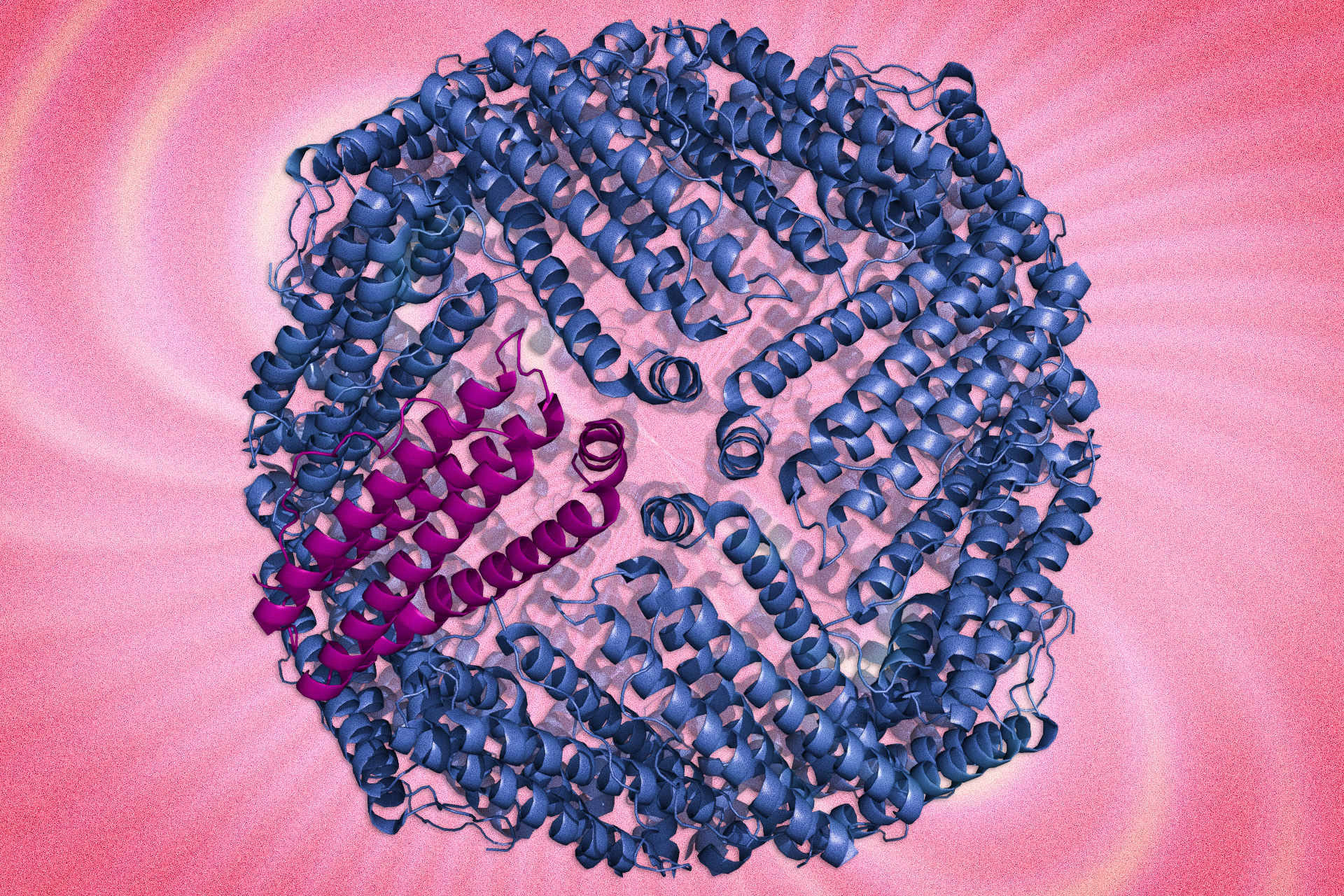
Shown here is a ferritin protein complex. MIT researchers are using protein engineering the boost the magnetic characteristics of the protein to track cells. Illustration: Jose-Luis Olivares/MIT (ferritin illustrations courtesy of Wikimedia)
New protein nanoparticles allow scientists to track cells and interactions within them.
MIT engineers have designed magnetic protein nanoparticles that can be used to track cells or to monitor interactions within cells. The particles, described today in Nature Communications, are an enhanced version of a naturally occurring, weakly magnetic protein called ferritin.
“Ferritin, which is as close as biology has given us to a naturally magnetic protein nanoparticle, is really not that magnetic. That’s what this paper is addressing,” says Alan Jasanoff, an MIT professor of biological engineering and the paper’s senior author. “We used the tools of protein engineering to try to boost the magnetic characteristics of this protein.”
The new “hypermagnetic” protein nanoparticles can be produced within cells, allowing the cells to be imaged or sorted using magnetic techniques. This eliminates the need to tag cells with synthetic particles and allows the particles to sense other molecules inside cells.
The paper’s lead author is former MIT graduate student Yuri Matsumoto. Other authors are graduate student Ritchie Chen and Polina Anikeeva, an assistant professor of materials science and engineering.

